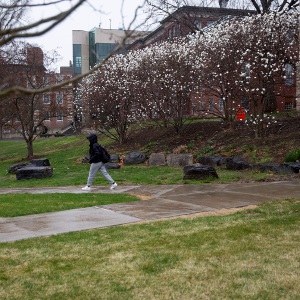TOP STORIES of 2022
| Published: 12-30-2022 9:04 PM |
Here’s a look back at some of the top stories in the Upper Valley during 2022 as selected by Valley News editors.
No topic dominated the agenda in the Upper Valley in 2022 the way that housing did. From policymakers to employers to families, the lack of available and affordable housing is a defining aspect of living here.
The pandemic exacerbated an already problematic situation. Rents increased significantly, forcing some tenants out of their longtime homes. And housing sales drove home prices to all-time highs, which will mean higher tax bills for many property owners.
After a decades-long building boom of apartments and condominiums along Mount Support Road, Lebanon officials approved two massive projects this year that will reshape the city’s downtown. One will bring more than 500 apartments to the southwest corner of Colburn Park, and the other will bring residential units to a nearby former industrial area along the city’s long neglected riverfront.
In Hanover, a proposal by Dartmouth College to build student housing on the far north end of the former Hanover Country Club golf course offers further insight into the region’s housing woes. The plan to build 128 apartment-style units next to the Hanover police and fire station has drawn staunch opposition from nearby homeowners, who object to increased traffic and noise, and from those who say it’s wrong to house students so far from the campus core.
Dartmouth sends hundreds of students out into Hanover and beyond seeking rental units, putting further pressure on the region’s housing supply. The college, which has aims on growing its enrollment, appears determined to move ahead with this project and might have regulations on its side: Hanover’s Town Plan calls for growth on Lyme Road.
Also linked to the region’s housing crisis is homelessness. In Hartford, Upper Valley Haven has sparred with planning and zoning boards over plans to expand shelter accommodations at its campus on Route 5. And throughout the Upper Valley, entire hotels have been rented for residents experiencing homelessness during the pandemic. But these federally supported pandemic programs are set to expire in 2023, and it will be left to the states and local communities to fill in the gaps.
The scale of what’s required to address them make the Upper Valley’s housing problems seem intractable, and all but guarantee it will continue to be a major regional issue for the foreseeable future.
Article continues after...
Yesterday's Most Read Articles
 Zantop daughter: ‘I wish James' family the best and hope that they are able to heal’
Zantop daughter: ‘I wish James' family the best and hope that they are able to heal’
 James Parker granted parole for his role in Dartmouth professors’ stabbing deaths
James Parker granted parole for his role in Dartmouth professors’ stabbing deaths
 2024 Upper Valley high school softball guide
2024 Upper Valley high school softball guide
 Art Notes: After losing primary venues, JAG Productions persists
Art Notes: After losing primary venues, JAG Productions persists
 Chelsea Green to be sold to international publishing behemoth
Chelsea Green to be sold to international publishing behemoth
One of the hallmarks of the pandemic has been the upheaval in the job market. In the Upper Valley, the problems have been particularly pronounced for municipalities. Nearly all towns are having a hard time recruiting and retaining qualified employees.
Norwich, in particular, has spent the better part of the year in a pointed debate over municipal operations. In the meantime, Rod Francis, the former town manager, has departed after less than a year and the town’s departments — from public works to police — have been left understaffed and demoralized.
A group of citizens under the moniker Stand Up for Norwich has been pressing for what members characterize as transparency and accountability. But elected officials and some town employees have accused the group of bullying and creating a toxic atmosphere in Tracy Hall, including a Selectboard member who said the mood in town contributed to his decision to relinquish the board chairmanship.
Earlier this month, the town hired an interim manager and has turned to consultants to help identify a permanent manager to try to right the ship.
The situation is similar in Hartford, where the town also parted ways with municipal manager Tracy Yarlott-Davis. She was placed on administrative leave in October after just 18 months on the job and formally separated from the town earlier this month. Again, vitriol from residents and elected officials and reports of discontent among town staff — including a prolonged vacancy at chief of police — contributed to the split.
Even tiny towns such as Chelsea haven’t been immune. All but one of the town’s Selectboard members resigned this year after a row with the town’s road crew spilled into public view.
Communities without quite as much discord also have experienced turnover. Hanover’s Julia Griffin, who managed the college town’s complex affairs for 25 years, retired earlier this year. In Woodstock, the town and village finally hired a permanent successor to Phil Swanson, who was municipal manager for 34 years before he died in 2019.
For the second time in under a decade, Dartmouth Health failed in its efforts to merge with a large hospital in New Hampshire’s southern tier, where the majority of the state’s potential patients live and work.
The New Hampshire Attorney General’s Office determined that Dartmouth Health’s proposal to merge with Granite One, a health system that includes Manchester’s Catholic Medical Center, would have violated the state’s constitution because the combined health systems would have given DH too much sway over the Granite State’s health care marketplace. A similar proposal to combine with Elliot Hospital was rejected by the Attorney General’s Office in 2017.
DH officials have said expanding the health system’s market share in the more populous part of the state is pivotal as it competes for patients and revenue with prestigious Massachusetts providers.
Since the demise of the Catholic Medical Center proposal, DH has announced two new formal partnerships — with Claremont’s Valley Regional and Southwest Vermont Medical Center, in Bennington — but both are on a much smaller scale than the deal squelched by state regulators.
However DH next decides to pursue growth, it will do so without Hitchcock in its name. In spring, the state’s largest private employer — in a much hyped reveal — announced that it would be dropping Hitchcock in favor of the simpler Dartmouth Health. Officials said emphasizing the Dartmouth part of its name just made more sense when appealing to patients outside the Upper Valley, for whom Hitchcock — a holdover from a wealthy benefactor from the 1890s — meant little. Other cherished Upper Valley entities — such as Norris Cotton Cancer Center and Children’s Hospital at Dartmouth — also saw their names changed as part of the rebranding effort.
What seemed like a longshot in the beginning ended up being a cakewalk for Croydon voters who fought to rescue the town’s school budget from a draconian cut that threatened to shut down the town’s elementary school and tank a tuition program for older students.
At the annual school district meeting in March, a group of residents motivated by Libertarian ideology moved to cut the proposed $1.7 million school budget for 2022-23 to $800,000.
With just a few dozen residents present at the lightly attended March 12 meeting, the reduction was approved 20-14, setting off a panic among parents who feared what it would mean for students this fall. In the aftermath, the School Board urged families to consider full-time online schooling and educational pods to replace Croydon Village School.
Unwilling to accept the cuts being foisted upon them, residents began a push to restore the budget to $1.7 million, but the process, at least initially, appeared daunting.
To reverse the budget cut, residents needed to petition for a reconsideration of the budget. But there was a catch. Under New Hampshire law, a budget can be brought up for revote only if more than 50% of registered voters show up to cast a ballot. In Croydon, that meant getting at least 283 of the town’s 565 registered voters to show up to an in-person meeting.
The gathering was scheduled for May 7 in the hall at Camp Coniston, the only location in town able to accommodate so many people.
In the end, what had appeared to be an insurmountable task turned out to be an easy victory for school budget supporters. Nearly 400 residents showed up for the revote, and the budget was restored by a tally of 377-2. In the summer, The New York Times published an in depth story on the Croydon saga, presenting it as a cautionary tale during a time of renewed culture wars in America, particularly around education.
Ever since Vermont’s Woodside Juvenile Rehabilitation Center closed in 2020 amid allegations of the use of excessive restraints on the minors who lived there, Vermont’s Department of Corrections has struggled with housing the state’s underage offenders.
In October, the Environmental Division of Vermont Superior Court overturned Newbury’s rejection of a plan to build a youth detention facility.
In November 2021, the town’s Development Review Board had denied a conditional use permit needed for the project. The proposal had spurred the creation of a grassroots opposition group, Concerned4Newbury.
The court ruled that under Vermont law the project should be considered a residential facility focused on mental health and substance abuse treatment, meaning the town was unable to block it through zoning..
The town appealed the ruling to the state Supreme Court, arguing that the project is primarily about detention for young people who had committed serious crimes rather than a treatment facility and should be evaluated accordingly.
Earlier this month at a listening session organized by Lt. Gov. Molly Gray, a Newbury native, state officials were back to hear residents voice their concerns about the project once more.
Chief among the concerns is the town’s lack of a police department. Given the violent nature of the offenses committed by some of the facility’s residents, townspeople were worried about who would respond in the event of a threat. They voiced concerns about the location, far down an unmaintained Class 4 road on the west side of Interstate 91. And they expressed misgivings that the facility would be run by a private contractor instead of the state itself.
Gray voiced her opposition to the project, but the officials from the Vermont Department of Children and Families in attendance made it clear that the state must have a facility to house juvenile offenders.
In the meantime, Newbury residents are left hoping the Vermont Supreme Court will be swayed by their arguments.
A sudden thaw last March triggered one of the worst mud seasons in living memory, with some roads rendered impassable to even the hardiest four-wheel drive vehicles.
ATVs had to ferry patients to ambulances who couldn’t reach them. School buses were forced to abandon routes on unpaved roads. Truckloads of gravel disappeared into the muck as highway crews struggled to keep roads passable.
Much of the blame for the extreme mud season can be placed on climate change.
Warmer winters mean that less precipitation is falling as snow. Rain and sleet seep deeper into the soil throughout the winter, setting the stage for deeper mud come the spring thaw. And with surface level thaws occurring earlier and more quickly, the stage is set for the type of mud season seen in 2022. Scientists warn the region should be prepared for similar conditions in coming years.
In the meantime, towns may reconsider road budgets.

 Kenyon: No respite from conflict in Upper Valley
Kenyon: No respite from conflict in Upper Valley A Life: Peggy Thorp ‘was critical to getting it all done’
A Life: Peggy Thorp ‘was critical to getting it all done’
